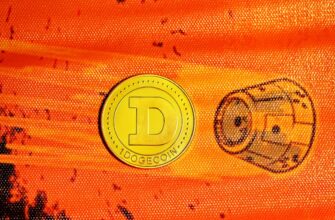👑 Airdrop Royalty: $RESOLV Awaits!
💰 Want to build your crypto empire? Start with the free $RESOLV airdrop!
🏆 A golden chance to grow your wallet — no cost, no catch.
📅 You’ve got 30 days after registering. Don't wait too long!
🌟 Be among the first movers and enjoy the biggest rewards.
🚀 This is your gateway to potential wealth in Web3.
- Introduction to Stablecoin Titans
- What Are Stablecoins?
- Tether (USDT) Deep Dive
- Key Features:
- Pros and Cons:
- USD Coin (USDC) Analysis
- Key Features:
- Pros and Cons:
- Binance USD (BUSD) Explained
- Key Features:
- Pros and Cons:
- Head-to-Head Comparison
- Which Stablecoin Should You Choose?
- Frequently Asked Questions
- Are USDT, USDC and BUSD equally safe?
- Can these stablecoins lose their peg?
- Which has the lowest transaction fees?
- How do I convert between stablecoins?
- Will regulations affect stablecoins?
Introduction to Stablecoin Titans
In the volatile world of cryptocurrencies, stablecoins like USDT, USDC, and BUSD provide crucial price stability by pegging their value to traditional assets. This comprehensive guide examines the three dominant USD-pegged stablecoins—Tether (USDT), USD Coin (USDC), and Binance USD (BUSD)—comparing their issuers, transparency, use cases, and regulatory compliance to help you make informed decisions in the crypto ecosystem.
What Are Stablecoins?
Stablecoins are cryptocurrencies designed to maintain a consistent value, typically pegged 1:1 to fiat currencies like the US dollar. They bridge traditional finance and crypto by offering:
- Reduced volatility for trading and savings
- Faster cross-border transactions than traditional banking
- Access to decentralized finance (DeFi) platforms
- Hedging during market downturns
Tether (USDT) Deep Dive
Launched in 2014, Tether is the oldest and most widely adopted stablecoin with a $83 billion market cap (as of 2023). Operated by Hong Kong-based Tether Limited, it’s available across 10+ blockchains including Ethereum and Tron.
Key Features:
- Backing: Claims reserves include cash, commercial paper, and other assets (audits disputed)
- Transparency: Quarterly attestations (not full audits)
- Use Cases: Dominates crypto trading pairs; 70% of Bitcoin trades involve USDT
Pros and Cons:
- ✓ Unmatched liquidity and exchange support
- ✓ Lowest transaction fees on Tron network
- ✗ History of regulatory scrutiny and settlement fines
- ✗ Opaque reserve composition
USD Coin (USDC) Analysis
Managed by Circle and Coinbase through Centre Consortium, USDC has grown rapidly since 2018 to a $26 billion market cap. Known for regulatory compliance, it operates on 15+ blockchains.
Key Features:
- Backing: 100% cash and U.S. Treasuries (monthly attestations by Grant Thornton)
- Transparency: Detailed monthly reserve reports
- Use Cases: Preferred for DeFi protocols and institutional adoption
Pros and Cons:
- ✓ Highest regulatory compliance (NYDFS-approved)
- ✓ Real-time attestation tools for verification
- ✗ Lower liquidity than USDT on some exchanges
- ✗ Centralized freeze function used in sanctioned addresses
Binance USD (BUSD) Explained
Created in 2019 through a partnership between Binance and Paxos, BUSD holds a $5.8 billion market cap. It’s deeply integrated with the Binance ecosystem but faces regulatory headwinds in 2023.
Key Features:
- Backing: Fully reserved in FDIC-insured banks and U.S. Treasuries
- Transparency: Monthly attestations by Withum
- Use Cases: Fee discounts on Binance exchange; BNB Chain transactions
Pros and Cons:
- ✓ Zero trading fees when paired with BNB
- ✓ Seamless Binance ecosystem integration
- ✗ Limited utility outside Binance platforms
- ✗ SEC lawsuit alleging unregistered security (2023)
Head-to-Head Comparison
| Feature | USDT | USDC | BUSD |
|---|---|---|---|
| Market Dominance | 67% | 21% | 4.6% |
| Reserve Transparency | Medium | High | High |
| Regulatory Status | Mixed history | Strong compliance | Under SEC scrutiny |
| Transaction Speed | 2-5 min (varies by chain) | 2-5 min | <1 min (BNB Chain) |
| Primary Use Case | Crypto trading | DeFi & institutions | Binance ecosystem |
Which Stablecoin Should You Choose?
Your ideal stablecoin depends on specific needs:
- Traders: USDT for maximum liquidity and pairs
- Risk-Averse Users: USDC for transparency and compliance
- Binance Users: BUSD for exchange-specific benefits
- DeFi Participants: USDC for widest protocol support
Diversification across multiple stablecoins mitigates platform and regulatory risks. Always verify redemption policies before large transfers.
Frequently Asked Questions
Are USDT, USDC and BUSD equally safe?
Safety varies: USDC and BUSD have clearer reserve backing, while USDT’s history includes controversies. All carry counterparty risk if issuers fail.
Can these stablecoins lose their peg?
Temporarily yes—during extreme market events (e.g., USDC dipped to $0.87 during 2023 banking crisis). Pegs typically recover through arbitrage.
Which has the lowest transaction fees?
BUSD on BNB Chain ($0.01 average), followed by USDT on Tron ($0.20). Ethereum-based transfers cost $1-$5 during congestion.
How do I convert between stablecoins?
Use exchanges (Binance, Coinbase) or decentralized platforms like Uniswap. Watch for spread differences—USDT often has tighter spreads.
Will regulations affect stablecoins?
Likely. The 2023 U.S. Stablecoin Bill proposes stricter reserve and issuance rules, potentially favoring compliant coins like USDC.








